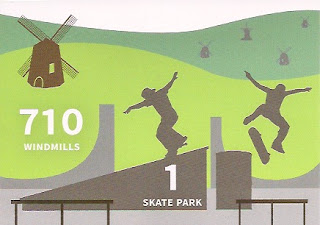 |
| OS 1924 map. |
The Midland Railway is laid out on a broadly north-south alignment through St Albans, and when travelling the roads in and around the city we need to negotiate the railway. Fortunately we do not suffer the constant noose of a level crossing, but we've always had bridges: over on the bypass, under at Cottonmill Lane and London Road, and over at Victoria Street, Hatfield Road, Sandpit Lane and the King William IV.
The over-bridges have all had improvements made at some time or other, and Sandpit Lane probably the most drastic of all, considering its original width. The "Lane", in Sandpit Lane, gives us an image of a narrow rural cart lane with wastes on each side, partly wooded and partly hedged. At the western end it descended from the town hill before climbing again onto Hall Heath and finally descending once more onto the wider plain east of Newgates.
The map illustrates that the line of the bridge, when constructed in the 1860s, still allowed for carts and pedestrians to continue along the original route while the work took place to build it. The original alignment was then neglected once the bridge was opened for traffic and the work completed at railway level.
 |
| The bridge today. |
The bridge was wide enough for two carts to pass. After all, it was a country lane and vehicles and pedestrians had always shared the same space. That is how it remained until a narrow footpath was added on one side in the 1950s. In fact, the houses fronting Sandpit Lane at the end of Gurney Court Road still have their private footpath, because none was available on Sandpit Lane itself when the homes were first built in the 1930s.
As for the traffic itself, there was light movement until Marshalswick, Newgates and Jersey farms were developed, and more latterly the business and university traffic at Hatfield. Most of the vehicles were cars or other light vehicles, and passing over the bridge was not an issue even if two opposing vehicles were passing. Nevertheless add cyclists to this mix and a
 |
| Private footpath through the gate. |
further proposal for two full width footpaths, and the potential issues mounted up.
The bridge was the responsibility of the railway and, after a century of use, bearing in mind it was designed as a rural light vehicle bridge, the structure required replacement. Meanwhile, a weight limit was imposed, which had an immediate impact on heavy vehicles, including the double-deck 354 bus.
 |
With the railway closed work continues to widen the bridge.
COURTESY ST ALBANS MUSEUMS |
So, in 1968, work began on removing the old bridge and extending the ramp, which made the approach easier for pedestrians and cyclists, the only groups of users that were able to cross while the work proceeded. Other traffic was diverted to nearby bridges, and finally a two lane roadway of full width, plus two footpaths, was available, with better sightlines at Lancaster Road, Lemsford Road (always an awkward junction) and Clarence Road.
 |
The widened road extends over the original alignment of the
Lane. View eastwards from the bridge deck.
COURTESY ST ALBANS MUSEUMS |
It all seems such a long time ago – nearly fifty years – but in coping with today's traffic levels it reflects the gradual change from rural lane to urban radial road, and unofficial northern by-pass for Fleetville.
Incidentally, if anyone has a photograph of the original Sandpit Lane bridge, do please email saoee@me.com










































